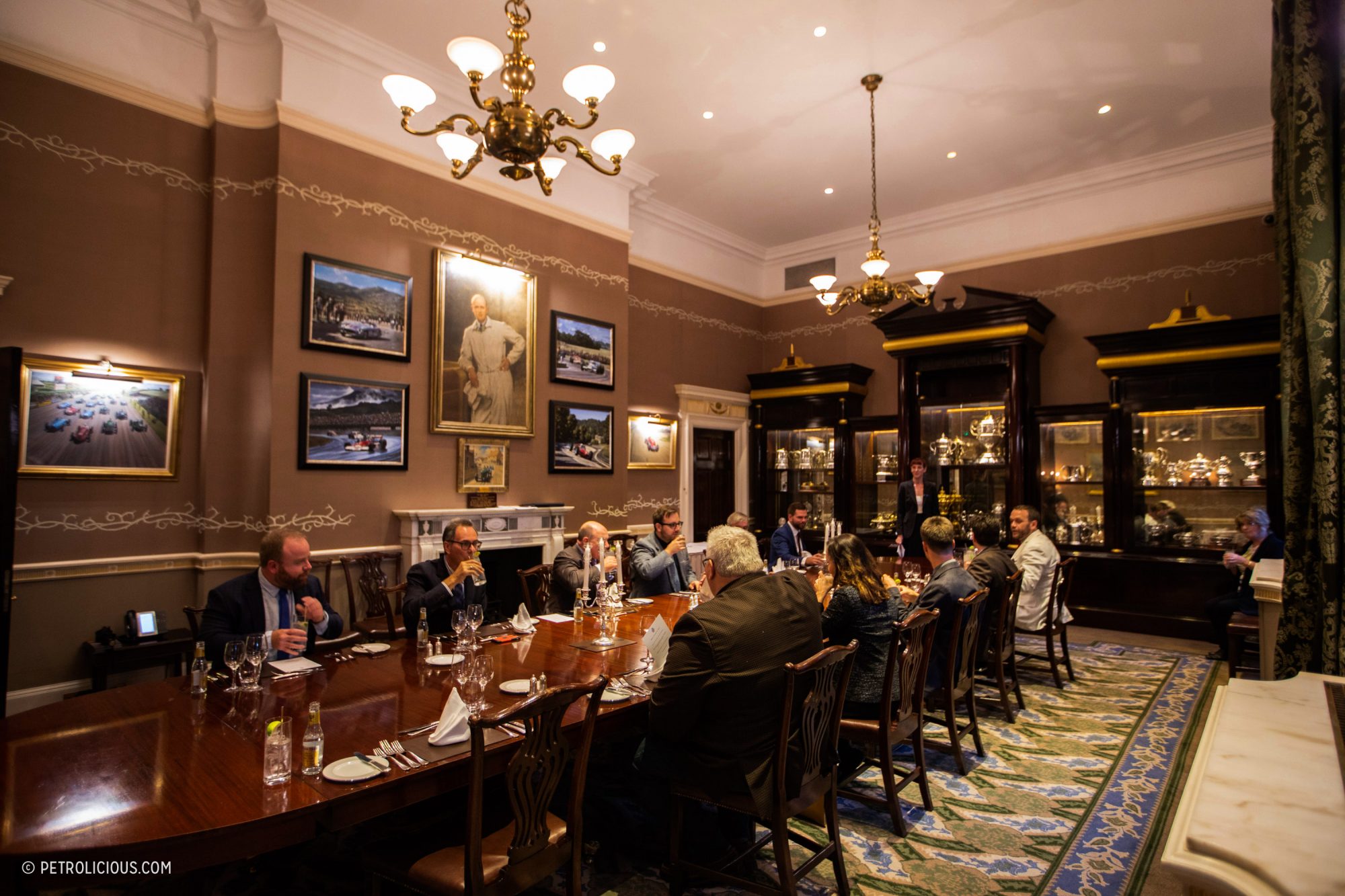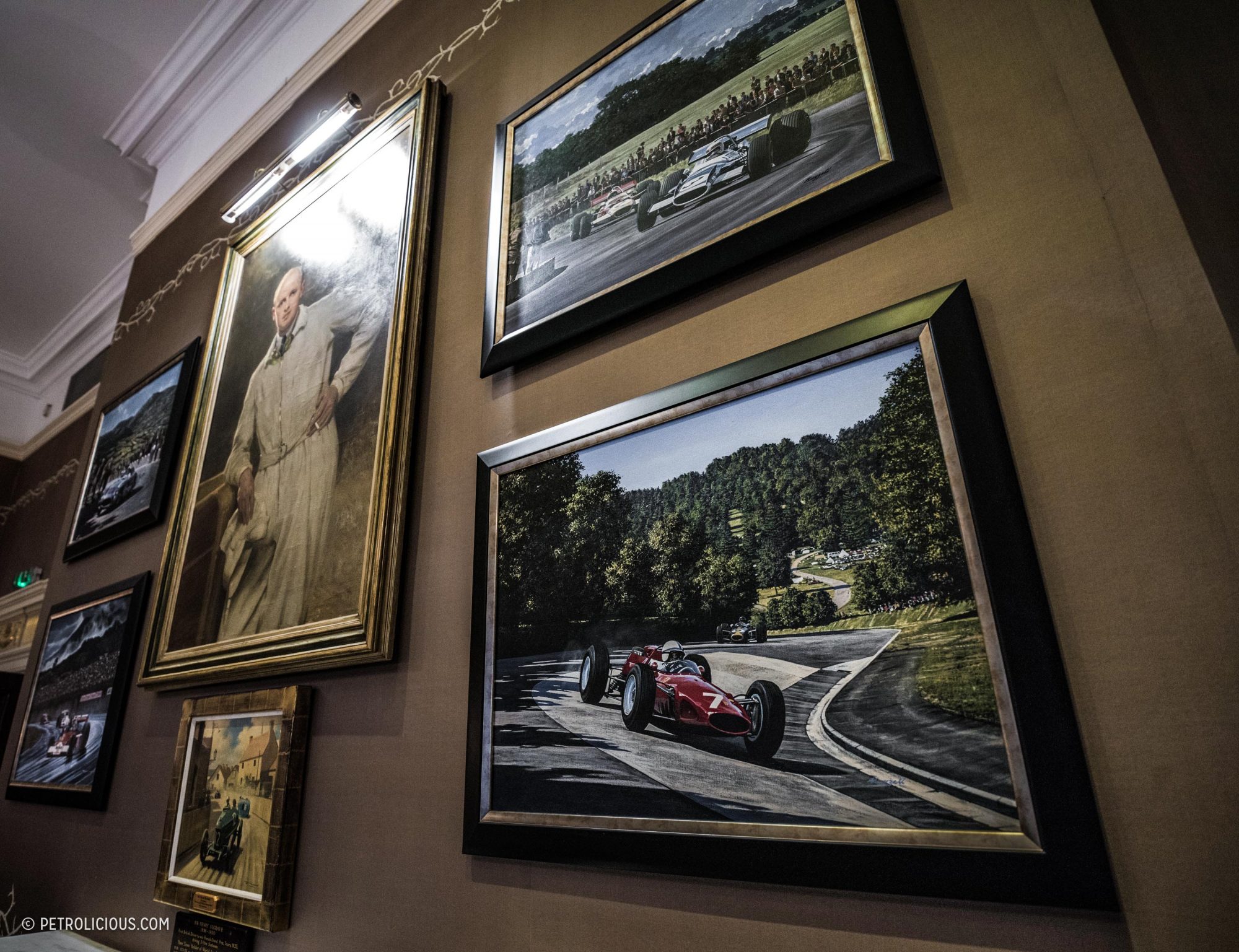
One might expect a beautifully crafted chandelier, or perhaps a chiseled bust of a nobleman to act as the centerpiece of a hall festooned with original Edwardian decor, but at the Royal Automobile Club, an organization founded in 1897, it’s an Aston Martin DB4 continuation car that ties the room together. While it offers modern amenities today like Turkish Baths, squash courts, and a spa, the beginnings of the Royal Automobile Club are firmly rooted in forwarding the interests of motoring enthusiasts and positioning the advantages and large-scale utility of automobiles squarely in the public’s eye. In other words, it’s where a lot of English car culture was born.
The main purpose behind the club is a sort of academic-like approach to documenting and influencing the history of the automobile. A petrolista could spend ages in the volumes of motoring literature in the library—the records date back to 1897. It’s always been a place where decisions were made that often affected an entire industry.
In America, the post-WWII rising popularity of the motor car was marked by democratic notions of a newfound personal freedom, big engines, and even bigger dreams about crisscrossing the country on its new highway system. In England, the culture surrounding cars gave rise to a crop of gentleman drivers, and the Royal Automobile Club is where you’d find them gathering, gin and tonic in hand, plotting their next feat.
Long before the concept of a gentleman driver there was Henry Segrave, an American-born Englishman who grew up in Ireland, before attending boarding school in England. His first taste of mechanical thrills came in the form of combat flying as a fighter pilot for the Royal Flying Corps in World War I, and after resigning his commission, Segrave would capitalize on the burgeoning motorsport industry in England.
He won Britain’s first 200-mile race and then went on to clean up in the international circuit as well, winning the French Grand Prix in 1923 and a year later, the San Sebastian Grand Prix.
Winning races around Europe wasn’t enough for Segrave apparently, he was hellbent on going as fast as he could, and faster than anyone else could. So as a followup to a winning career, he put his speed hunting efforts toward setting land speed records. In 1926 Segrave piloted the Ladybird, a custom-built Sunbeam Tiger at Ainsdale Beach to 152mph. This high-speed run was training for what would become Segrave’s most dangerous bid for speed superiority.
The Golden Arrow was designed by aeronautics engineer John Samuel Irving, and utilized a 24-liter, 925hp, W12 engine that was designed for Supermarine Aircraft. The Golden Arrow’s nose was even designed after the Supermarine S.5’s, which contributed to the design of the famed Supermarine Spitfire later on. Segrave drove the Golden Arrow to an astounding 231mph in 1929. In 2019 that’s fast, but in 1929 it was simply hyperbolic.
Segrave died a year later while attempting to push Miss England II, a speedboat he had helped engineer, to a water speed record. The boat capsized at full tilt, killing Segrave. The Royal Automobile Club created the Segrave Trophy after his passing to honor British nationals with “Outstanding Skill, Courage and Initiative on Land, Water, and in the Air.” The trophy is on full display at the club’s aptly named Segrave Room.
The Pall Mall clubhouse was designed by architects from the firm Mewes & Davis. The turn of the century decor and aesthetic has remained intact over the past century, with Robert Carter of Felbrigg Design Company refreshing the main dining room in 2007. But it’s the car in the rotunda that delivers the most immediate wow factor to anyone seeing the club for the first time. When I visited, Aston Martin Works had recently opened a heritage showroom in London, and the DB4 GT continuation car was parading around England, making a stop at the Royal Automobile Club for the nation’s most experienced auto enthusiasts to ogle.
As far as centerpieces go, a bronze statue or marble bust don’t compare to the lightweight aluminum panels of a car that epitomizes English motoring.





















